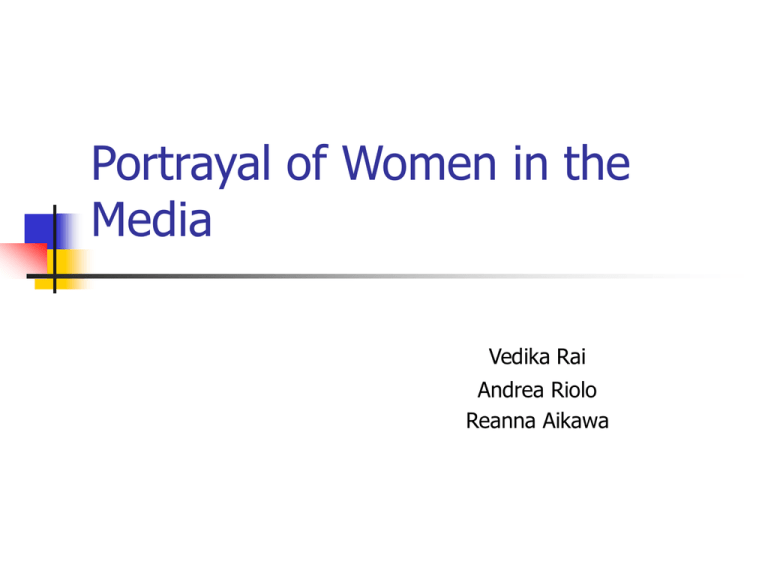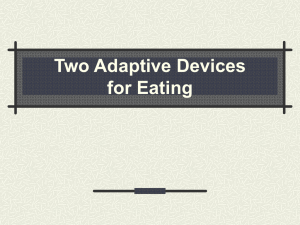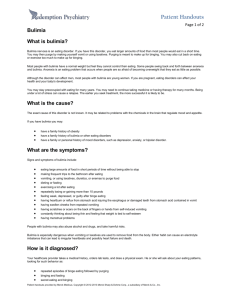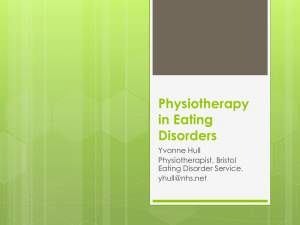
Portrayal of Women in the
Media
Vedika Rai
Andrea Riolo
Reanna Aikawa
History of Women in Media
1920’s – The Victorian hourglass figure gave way to the
pencil thin flapper
1950’s - A thin woman with large breast was seen as most
desirable
History-1960s
By the 1960’s slenderness became the single most
important indicator of physical attractiveness following the
arrival of British Super Model Twiggy
Playboy Magazine also promoted the slim body type as
ideal between 1958-1979
History-1970-1980
1970-1980’s- There was an overall
increased emphasis on weight loss and body
shape in the content of a popular women's
magazine such as Cosmopolitan and Vogue
History-1990’s
The ideal body type for women was slight
and slender but with a more athletic and
toned look.
Jean Kilbourne’s Research
“Advertising creates a mythical, mostly white
world in which people are rarely ugly,
overweight, poor, struggling or disabled, either
physically or mentally”
“Scientific studies and the most casual viewing
yield the same conclusion: women are shown
almost exclusively as housewives or sex
objects”
“Many women internalize these stereotypes
and learn their limitations, thus establishing a
self-fulfilling prophecy”
The Impact of Media on Body
Image
People all over the world use the media
every day. Whether it's using a computer,
watching TV, reading a newspaper, or
listening to the radio, media is a way to
communicate. However, media also plays a
big role on body image and how teenagers
perceive themselves.
Statistics
•The average weight of a model is 23% lower than
that of an average woman; 20 years ago, the
differential was only about 8%.
•There is now a $33 billion diet industry that was
non-existent 20 years ago
•In the last 25 years there has been a 60% increase
in females shown purely as decorative/sex objects.
Statistics Continued..
• The body type portrayed in advertising as the ideal
is naturally possessed by only 5% of females in
the United States.
• In a recent survey by Teen People magazine, 27%
of the girls felt that the media pressures them to
have a perfect body.
• 69% of girls in one study said that magazine
models influence their idea of a perfect body
shape.
Teen’s Body Image
How do you see yourself when looking in the mirror? Many teens worry about
how they look, "Am I too fat? Too skinny? Am I ugly, pretty or handsome?"
Eating Disorders as a Result of
Negative Body Image
Anorexia nervosa - People who intentionally
starve themselves suffer from an eating disorder
Bulimia nervosa – People consume large amounts
of food and then rid their bodies of the excess
calories by vomiting, abusing laxatives or
diuretics or exercising obsessively.
Binge eating disorder - An illness that resembles
bulimia. Like bulimia, the disorder is
characterized by episodes of uncontrolled eating
or binge eating
Eating disorders have increased 400% since 1970
Television shows promoting
Plastic Surgery
The Swan -contestants undergo painful
surgeries in pursuit of winning a beauty
pageant
I Want a Famous Face- young adults get
plastic surgery with the goal of looking more
like a celebrity
Bridalplasty-12 engaged women who are
competing for the wedding of their dreams
and their dream plastic surgery procedure
Television shows promoting
Plastic Surgery…..
Media and Plastic Surgery
Trends in Plastic Surgery
Solution-Media Watchdog
Students, educators, parents, eating
disorders sufferers, and concerned
consumers work to improve media messages
about size, weight and beauty
Encourage companies and advertisers to
send healthy media messages regarding
body size and shape
Recognizing advertisements that send
healthy body image messages, as well as
pointing out advertisements that send
negative body image messages
References
Media and body image. (n.d.). Retrieved from http://www.southernct.edu/womenscenter/mediaandbodyimage2/
Eating disorder. (2011). Retrieved from http://www.pamf.org/teen/life/bodyimage/anorexia.html
Timofeyev, A, & Sharff, K. (2002). Suicide. Retrieved from
http://wso.williams.edu/~atimofey/self_mutilation/Definition/What_isnt/suicide.html
http://www.wimnonline.org/WIMNsVoicesBlog/?author=28&profile
Gerber, Robin., (2010) Beauty and Body Image in the Media. Media awareness Network.
(http://www.media-awareness.ca)
Mask, L., & Blanchard, C. M. (2011). The protective role of general self-determination against ‘thin ideal’ media
exposure on women’s body image and eating-related concerns. Journal of Health Psychology, 16(3), 489-499.
doi:10.1177/1359105310385367
SWAMI, V., TAYLOR, R., & CARVALHO, C. (2011). Body dissatisfaction assessed by the Photographic Figure
Rating Scale is associated with sociocultural, personality, and media influences. Scandinavian Journal of Psychology,
52(1), 57-63. doi:10.1111/j.1467-9450.2010.00836.x
Knobloch-Westerwick, S., & Romero, J. P. (2011). Body Ideals in the Media: Perceived Attainability and Social
Comparison Choices. Media Psychology, 14(1), 27-48. doi:10.1080/15213269.2010.547833
www.surgery.org
www.media-awarness.ca/english












